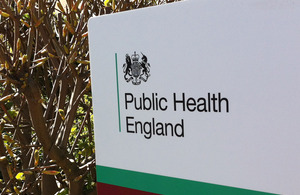Active Hospitals
The Active Hospital feasibility and acceptability pilot explores integrating physical activity interventions in a secondary care setting.

Summary
As part of the Moving Healthcare Professionals programme, PHE and Sport England have created an Active Hospital feasibility and acceptability pilot which has been developed and tested by Oxford University Hospitals NHS Foundation Trust. The pilot aimed to explore integrating physical activity interventions in a secondary care setting. To ensure an evidence-based approach, specific physical activity behaviour change interventions were designed, implemented and mapped alongside existing care using the Behaviour Change Wheel (Mitchie and others, 2011). One of the most successful interventions, the maternity pathway, has enhanced care through all pregnant women undergoing assessment and receiving brief physical activity advice.
Background
The programme has been piloted in different departments across Oxford University Hospitals NHS Foundation Trust. Each department became a separate ‘pathway’. These included prosthetics, renal transplant, inpatient complex medical unit, cardiology and maternity. In each pathway, a clinical champion was employed to lead the Active Hospitals pilot within each department and they were responsible for developing the interventions, as well as providing leadership and training to other staff within that clinical setting.
Clinical champions ensured that staff members within these pathways undertook training on motivational interviewing skills, to understand and communicate the benefits of physical activity to women. This training is underpinned by the evidence-based principles of Moving Medicine, a parallel Moving Healthcare Professionals programme developed by the Faculty of Sport and Exercise Medicine, to improve the quality of conversations about physical activity between patients and healthcare professionals.
How the service works: maternity pathway
The maternity pathway has engaged and enhanced the care of more than 10,000 pregnant women through the introduction of the designed interventions. These include:
- embedding a physical activity calculator with brief advice
- utilising motivational interviews for women with gestational diabetes
- group educational sessions
- staff training
- changing the outpatient environment with posters and a promotional film
- developing and distributing new patient information leaflets
Designed and incorporated into the electronic record system, the physical activity calculator has put the promotion of physical activity at the start of a pregnant woman’s contact with the hospital. Midwives have undertaken bespoke training to use the calculator and provide advice about physical activity during pregnancy. The training programme, which has now reached over 80 midwives across the Oxfordshire region, has improved the confidence levels of health professionals when discussing physical activity, changes in practice and offering brief advice.
Since April 2018, all pregnant women at OUHFT have been assessed using this tool. It identifies those women who do not meet the aerobic component of the CMO physical activity in pregnancy recommendations, so that this can then be flagged and explored again in further appointments.
For women with gestational diabetes, a specific clinic pathway was introduced. Clinical champions conducted motivational interviews and women were supported to set physical activity goals. These goals were tracked using a goal-setting booklet during regular follow-up sessions. This service ensured physical activity advice, an important intervention to help manage blood glucose levels, can compete with all the other aspects of care that women receive. Early findings have indicated a significant increase in self-reported physical activity levels 2 weeks after the intervention.
The clinical environment has been changed to encourage physical activity conversations, with posters and promotional materials including a short film. Developed as part of the pilot, an interactive community navigation map has been created to aid clinicians, patients and their relatives to identify possible support available in the community to facilitate ongoing physical activity, linking them with suitable community-run classes and activities.
Next steps
The central Active Hospitals team at Oxford University Hospitals NHS Foundation Trust has supported the expansion of the Active Hospital model to incorporate and enhance physical activity as a routine part of patient care in many other clinical services within the Trust.
The Trust continues in its activities to integrate physical activity into secondary care systems through the pilot and, in 2021, an ‘Active Hospital Toolkit’ that includes findings, learnings and experiences will be published.
The second phase of the Active Hospitals programme will involve two additional pilot sites in 2020.
Further information
Dr Christopher Speers, Dr Ralph Smith & Dr Natasha Jones Sport and Exercise Medicine Consultants, Oxford University Hospitals NHS Foundation Trust